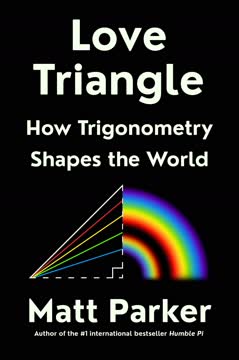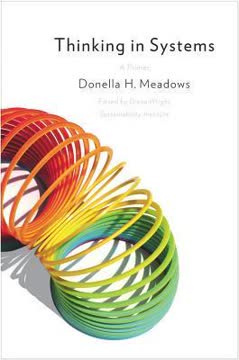Key Takeaways
1. Mathematics is revolutionizing biology, providing insights into life's complexity
Biology will be the great mathematical frontier of the twenty-first century.
Mathematical biology emerges. The application of mathematics to biology is transforming our understanding of life. From cellular processes to ecosystem dynamics, mathematical models are providing new insights into complex biological phenomena. This interdisciplinary approach is not merely about applying existing mathematical techniques to biological problems, but rather developing new mathematical concepts and methods specifically tailored to the challenges of biology.
Diverse applications arise. Mathematical biology has found applications in various areas:
- Modeling protein folding and molecular interactions
- Analyzing genetic regulatory networks
- Predicting population dynamics and ecosystem behavior
- Understanding pattern formation in developmental biology
- Simulating neural networks and brain function
As biology becomes increasingly quantitative, the synergy between mathematics and biology is expected to yield groundbreaking discoveries and reshape our understanding of life itself.
2. DNA is not the whole story: Protein folding and epigenetics play crucial roles
The genetic sequences encoded in DNA are a big part of 'the secret of life'. If you're not aware of the role of DNA, if you don't know what the sequence looks like, you're missing a gigantic part of the picture.
Beyond the genetic code. While DNA is undeniably crucial to life, it's not the whole story. The way proteins fold into complex three-dimensional structures and epigenetic factors that influence gene expression are equally important in determining an organism's characteristics and functions.
Protein folding complexity. The folding of proteins into their functional forms is a complex process that cannot be predicted solely from the DNA sequence. Factors influencing protein folding include:
- Amino acid sequence
- Environmental conditions (pH, temperature, etc.)
- Presence of chaperone proteins
- Post-translational modifications
Epigenetic influences. Epigenetic mechanisms can modify gene expression without changing the underlying DNA sequence. These include:
- DNA methylation
- Histone modifications
- Non-coding RNA interactions
Understanding these processes is crucial for a complete picture of how genetic information is translated into biological function and how organisms interact with their environment.
3. Symmetry breaking explains patterns in nature and species diversification
Orange beats blue beats yellow beats orange. So much for 'survival of the fittest'.
Symmetry in biology. Symmetry breaking is a fundamental concept in biology that explains how complex patterns and structures emerge from initially uniform systems. This principle applies to various biological phenomena, from the formation of animal coat patterns to the diversification of species.
Applications of symmetry breaking:
- Pattern formation in embryonic development
- Cellular differentiation
- Species diversification through adaptive radiation
- Ecological niche partitioning
In the context of evolutionary biology, symmetry breaking helps explain how multiple species can coexist in the same environment, challenging simplistic interpretations of "survival of the fittest." The rock-paper-scissors dynamics observed in some species, where no single strategy is universally superior, exemplifies how symmetry breaking can maintain biodiversity and drive evolution.
4. Chaos theory illuminates population dynamics and ecosystem diversity
Chaos also solves the paradox of the plankton.
Chaos in ecology. Chaos theory, often associated with the "butterfly effect," has profound implications for understanding population dynamics and ecosystem diversity. In ecological systems, small changes in initial conditions can lead to dramatically different outcomes, making long-term predictions challenging but revealing underlying patterns.
Applications of chaos theory in biology:
- Explaining fluctuations in population sizes
- Understanding the coexistence of multiple species in limited environments
- Modeling the spread of epidemics
- Analyzing heart rhythm variability
The "paradox of the plankton," where many species coexist in seemingly homogeneous environments, is resolved through chaotic dynamics. These fluctuations allow species to exploit resources at different times, promoting biodiversity. This insight demonstrates how complex, seemingly unpredictable behavior can arise from simple ecological rules, challenging traditional views of ecosystem stability and balance.
5. Networks are fundamental to understanding biological systems
Networks abound in biology.
Biological networks. Network theory provides a powerful framework for understanding complex biological systems at multiple scales. From molecular interactions within cells to food webs in ecosystems, network analysis reveals hidden patterns and principles governing biological organization.
Types of biological networks:
- Genetic regulatory networks
- Protein-protein interaction networks
- Metabolic networks
- Neural networks
- Ecological food webs
Network analysis in biology has led to important insights, such as:
- Identification of key "hub" genes in cellular processes
- Understanding the robustness and vulnerability of ecosystems
- Modeling the spread of diseases through populations
- Elucidating brain function and information processing
By applying network theory to biological systems, researchers can uncover emergent properties and predict system-wide behaviors that are not apparent from studying individual components in isolation.
6. Artificial life and synthetic biology blur the lines between living and non-living
If strong alife is right, what matters is not what life is made from, but what it does.
Redefining life. Artificial life (alife) and synthetic biology challenge our traditional definitions of life by creating systems that exhibit life-like properties without being "natural" organisms. These fields explore the fundamental principles of life by attempting to recreate living systems from non-living components.
Key developments:
- Self-replicating computer programs
- Cellular automata exhibiting complex behaviors
- Synthetic genomes inserted into existing cells
- Artificial cells with minimal genomes
These advancements raise philosophical and practical questions about the nature of life. If we can create systems that exhibit key features of living organisms (such as reproduction, metabolism, and evolution) from non-biological components, it suggests that life may be more about organization and information processing than specific chemical substrates.
7. The search for extraterrestrial life challenges our definition of life itself
Can we say anything genuinely scientific about life on other planets?
Expanding our concept of life. The search for extraterrestrial life forces us to reconsider our Earth-centric definition of life. As we explore environments radically different from those on Earth, we must be open to the possibility of life forms that may not conform to our familiar carbon-based, water-dependent biology.
Considerations for extraterrestrial life:
- Alternative biochemistries (e.g., silicon-based life)
- Exotic solvents replacing water (e.g., liquid methane)
- Life in extreme environments (e.g., inside stars or on rogue planets)
- Non-cellular life forms
The quest for extraterrestrial life not only drives technological innovation in astronomy and space exploration but also deepens our understanding of life's fundamental principles. By challenging our assumptions about what constitutes life, this search may lead to breakthroughs in biology, chemistry, and physics, potentially revolutionizing our understanding of our place in the universe.
Last updated:
FAQ
What's Mathematics of Life about?
- Interdisciplinary Exploration: Mathematics of Life by Ian Stewart explores the intersection of mathematics and biology, demonstrating how mathematical concepts are crucial for understanding biological phenomena.
- Historical and Future Revolutions: The book outlines five historical revolutions in biology and proposes a sixth revolution driven by mathematics, emphasizing its growing importance in biological research.
- Diverse Applications: Stewart covers a range of topics, from population dynamics and neural networks to the philosophical questions about life and the potential for extraterrestrial life.
Why should I read Mathematics of Life?
- Unique Perspective: The book offers a unique perspective on the application of mathematical principles to biological phenomena, appealing to those interested in both fields.
- Accessible Writing: Ian Stewart's engaging writing style makes complex topics accessible, even for readers without a strong background in mathematics or biology.
- Current Relevance: With ongoing advancements in biological sciences, understanding the mathematical frameworks that underpin these developments is increasingly important.
What are the key takeaways of Mathematics of Life?
- Mathematics as a Central Tool: Mathematics is not just a support for biology but a central tool that provides insights into biological processes and phenomena.
- Patterns and Complexity: The book highlights the prevalence of patterns in nature and the complexity of life, from molecular structures to ecosystems, and how mathematics helps model these complexities.
- Evolutionary Insights: Stewart discusses how mathematical models can explain evolutionary dynamics, such as natural selection and species diversity.
What are the best quotes from Mathematics of Life and what do they mean?
- "Biology will be the great mathematical frontier of the twenty-first century.": This quote underscores the growing importance of mathematics in biological research, suggesting future discoveries will rely on mathematical insights.
- "Mathematics is the language of nature.": This emphasizes the fundamental role of mathematics in understanding the natural world, suggesting that mathematical principles underpin biological processes.
- "Simple causes can have complex effects.": This reflects the idea that simple mathematical models can lead to unpredictable and intricate behaviors in biological systems.
What are the five revolutions in biology discussed in Mathematics of Life?
- Microscope Invention: Allowed scientists to observe cellular complexity, revealing that organisms are made of cells.
- Classification of Species: Carl Linnaeus's systematic classification laid the groundwork for modern taxonomy and biological diversity organization.
- Theory of Evolution: Darwin's Origin of Species introduced natural selection, fundamentally changing our understanding of species diversity.
- Discovery of Genes: Gregor Mendel's work on inheritance established the foundation for genetics and trait transmission.
- Structure of DNA: Watson and Crick's discovery of DNA's double helix provided insight into heredity and life's mechanisms.
How does Ian Stewart define life in Mathematics of Life?
- Organized Structure: Life possesses an organized structure essential for maintaining internal processes and responding to environmental changes.
- Regulation and Adaptation: Life forms regulate their internal behavior in response to stimuli and adapt to long-term environmental changes.
- Reproduction and Growth: The ability to reproduce and grow is central, with reproduction involving variability that allows for evolution.
How does Mathematics of Life explain the role of mathematics in understanding evolution?
- Mathematical Models: Models simulate evolutionary processes, helping scientists understand species adaptation and change over time.
- Game Theory Applications: Game theory analyzes survival and reproduction strategies, predicting behaviors in populations.
- Statistical Analysis: Statistics help analyze biological data, identifying patterns and making inferences about evolutionary relationships.
What is the paradox of the plankton discussed in Mathematics of Life?
- Competitive Exclusion Principle: Gause's principle states that two species competing for the same niche cannot coexist indefinitely, yet plankton species exhibit high diversity.
- Chaotic Dynamics: Chaotic dynamics in ecosystems allow for species coexistence by enabling population size fluctuations.
- Implications for Biodiversity: The paradox challenges traditional ecological theories, suggesting ecosystems can support more diversity than previously thought.
What mathematical models are used to explain population dynamics in Mathematics of Life?
- Logistic Growth Model: Describes how populations grow rapidly at first and then level off as they approach carrying capacity.
- Leslie Matrix: Accounts for age structure and mortality rates, allowing detailed analysis of population changes over time.
- Chaos Theory: Explores how simple models can lead to unpredictable and complex behaviors, highlighting nonlinear interactions in ecological systems.
How does Mathematics of Life illustrate the relationship between mathematics and ecology?
- Modeling Ecosystems: Mathematical models simulate ecological interactions, helping understand population dynamics and ecosystem stability.
- Network Theory: Relationships among species are represented mathematically to analyze ecosystem structure and function.
- Predictive Power: Models provide predictive insights, allowing anticipation of ecosystem changes due to environmental pressures or human activities.
What role does lateral inhibition play in development, according to Mathematics of Life?
- Cell Differentiation: Lateral inhibition allows cells to differentiate by inhibiting neighboring cells from adopting the same fate.
- Mathematical Modeling: Models simulate lateral inhibition effects, showing how small differences can produce complex patterns.
- Emergent Patterns: Random fluctuations can lead to distinct cell types, demonstrating the power of mathematical modeling in understanding biological processes.
What is the significance of the Fibonacci sequence in Mathematics of Life?
- Natural Patterns: Appears in various natural patterns, such as leaf arrangement and tree branching, reflecting underlying mathematical principles.
- Mathematical Relationships: Connected to the golden ratio, illustrating harmony between mathematics and the natural world.
- Modeling Growth: Used to model growth processes in plants, demonstrating how mathematical concepts provide insights into biological phenomena.
Review Summary
The Mathematics of Life receives mixed reviews, with an average rating of 3.62. Readers appreciate Stewart's clear writing and fascinating insights into mathematical applications in biology. Many find the book educational, covering topics like Fibonacci sequences, DNA structure, and evolutionary patterns. However, some criticize the uneven depth of content, with early chapters feeling too basic and later ones becoming overly complex. A few reviewers note factual errors and incomplete explanations. Overall, the book is praised for its interdisciplinary approach but may be challenging for readers without a strong scientific background.
Similar Books










Download PDF
Download EPUB
.epub digital book format is ideal for reading ebooks on phones, tablets, and e-readers.






